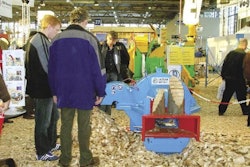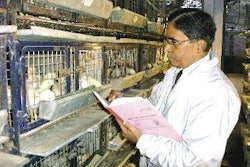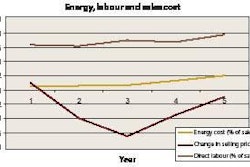A marked gender gap opened up early on when the number stood at 12. That all bar one were female is due to differential exposure by gender to infected backyard poultry. Caring for, slaughtering and preparing poultry is essentially ‘women’s work’ in Egypt.
Cases have soared to 34 but resulting deaths are much lower at 14, giving a survival rate of 59 percent. This is one of the highest for any country in the world including Vietnam (55%) with the best survival rate in East Asia. But nowhere is near as good as Turkey where 66 percent of the 12 people who contracted H5N1 in 2006 recovered.
Egypt’s high survival rate is ascribed to superior medical treatment and facilities in the country but the underlying reason is probably more fundamental. Like Turkey, Egypt has recorded a particularly high proportion of cases in very young children (less than10 years of age). In fact five of the last six cases in Egypt are children in this age group.
A World Health Organisation (WHO) study on the 2006 outbreak in Turkey found over 80 percent of cases were children under 16 with a median age for infection of 14 years. This follows the global trend in which over half of infections occur in young people less than 20 years old with almost 90 percent in people younger than 40.
This Turkish study threw up another equally interesting trend showing all those who died were teenagers, while all survivors were children under nine years of age. This also follows the global trend in which highest death rate (around 75 percent) occurs in young people between 10 and 19 years of age.
Like its infamous predecessor H1N1 (Spanish ‘flu of 1918-19 vintage), H5N1 causes most damage in humans possessing the strongest immune system, who are young people around their peak of physiological strength and fitness. It is not the virus that kills the victim but the patient’s own immune system ‘overreacting’ and swamping the respiratory system to cause death. Very young children do not have well developed and very strong immune systems and therefore escape this ‘self destructive’ response to H5N1 infection.
Throughout the world, young people invariably help their parents (usually mothers) look after family flocks of poultry but why so many extremely young children – some as young as two and three – should become infected in Egypt is not altogether clear. Careful study of information surrounding the outbreak in Turkey shows very young children tend to treat the family’s chickens as pets with the accompanying very close level of contact this implies. The January 2006 outbreak in South-east Turkey occurred during one of the coldest winters on recent record. Local reports said very young children were taking ‘pet chickens’ into the domestic living quarters to escape the cold.
One lesson to be learned: do not allow children unnecessary contact with live poultry, carcasses, feathers, faeces or anything else which may harbour infection.
In what should be a timely warning, two recent Egyptian child patients with influenza of avian origin were thought to represent a human cluster caused by human transmission of the virus. The boy (four years old) and his sister (six) from Quena province, 640 kilometers south of Cairo had been exposed to infected poultry, the proven source of infection for both children.
The most recent H5N1 patient in Egypt was a 15-year-old girl from the Shubra district and first case for Egypt’s capital city of Cairo. Ironically and perhaps predictably, this young fit person with a well developed immune system sadly succumbed just a few days after hospitalisation.
















